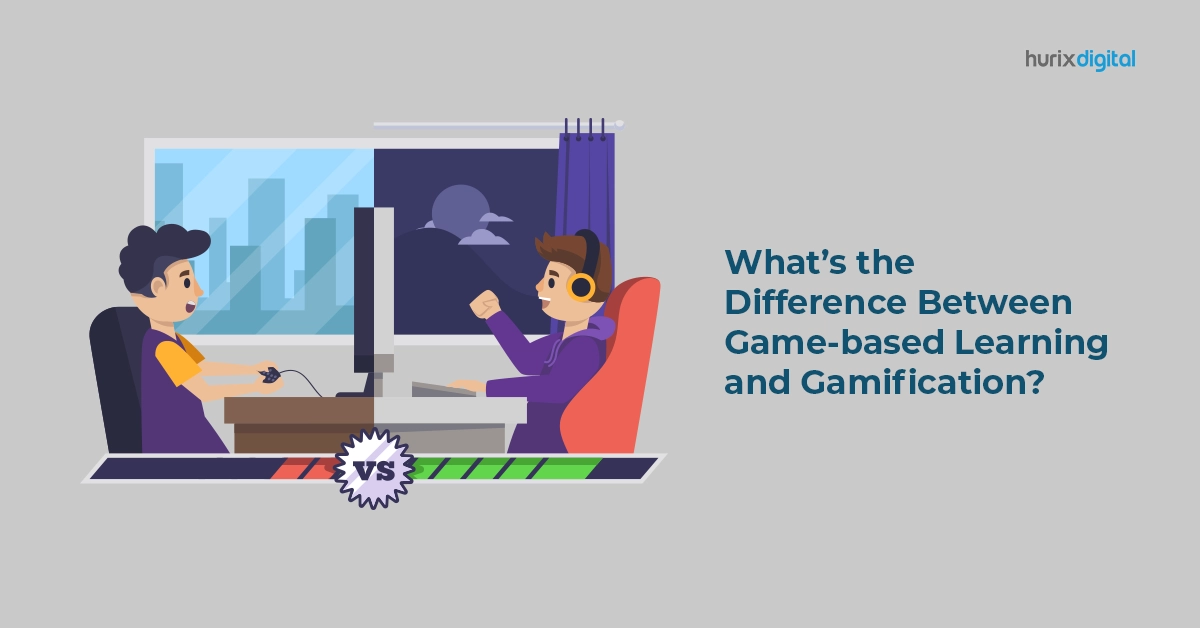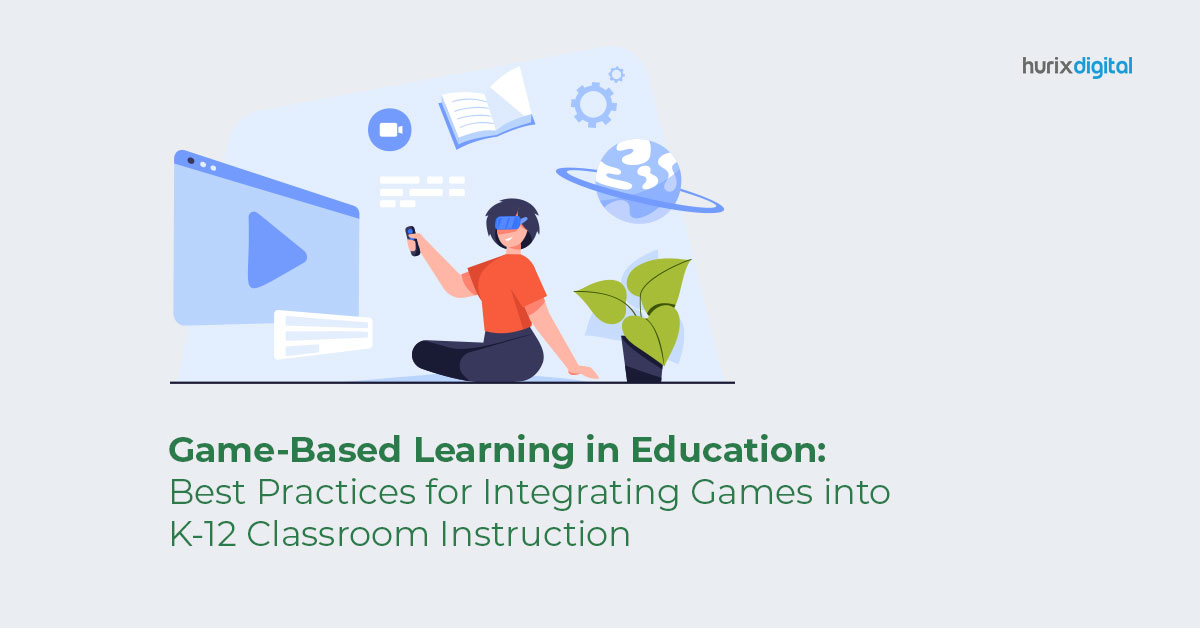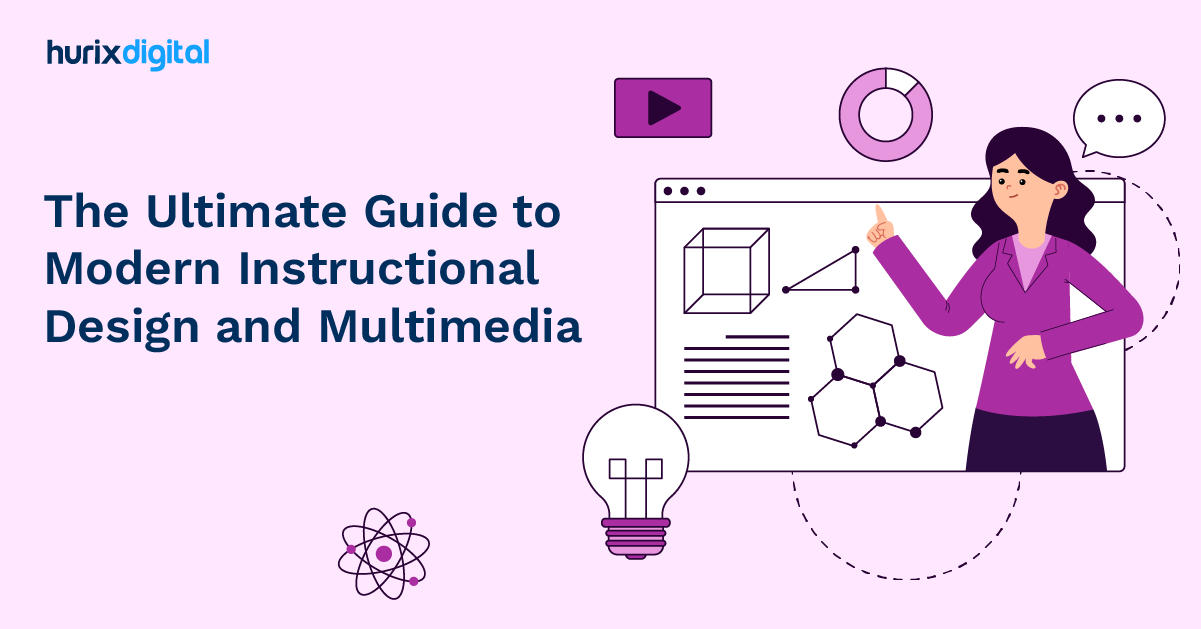
What’s the Difference Between Game-based Learning and Gamification?
Summary
This blog compares game-based learning, which integrates specific games, with gamification, which embeds game elements in courses, examining benefits and training applications.
You may be looking to make your online courses more interactive, engaging, and immersive. You can either take the gamification route or add some game elements to your courses. While both terms may seem similar, know that they are vastly different and the one you choose will depend on your goals and objectives. So, game-based learning vs gamification, which one is better – to answer this question, it is first important to understand the difference between the two terms.
Table of Contents:
Game-Based Learning
Game-based learning, also known as GBL, refers to adding game elements to your online learning to achieve specific learning outcomes. For instance, you have games that allow your employees to hone their skills in topics that require problem solving, hands-on practice and critical thinking. Unlike gamification, the entire training content is not gamified. Game-based learning is considered an effective way to bring about behavioural changes since learners learn by doing and upskill themselves.
Also Read: Top 10 Advantages of Game-Based Learning
When it first made its appearance, game-based learning was used in recruiting to give prospective employees an idea of the organization. So, even before they sent their resumes, employees could get a sense of the organization and see if they were the right fit or had a natural aptitude for the job. Game-based learning has come a long way since then and is now integral to learning and training.
There are two ways to implement game-based learning. You can use games that you already have to support your content. Besides, you can purchase plenty of off-the-shelf games that are available in abundance, for example, you can use online Monopoly to teach a concept in finance. The second option is to have custom games to support your teaching goals. In this case, it is important that you find a vendor with proven credentials since it costs time, money and effort to build a game from scratch.
It is important to note that games don’t just refer to computers or video games. They can also include card games, board games, word games or even games that don’t require any supporting material, for example, charades. The common thread however is that all game-based learnings have a goal and a set of rules that have to be followed to reach a milestone.
Game-based learning allows users to learn new concepts and practice their skills in a risk-free environment. Their progress in a game is directly related to their understanding of the subject. Game-based learning improves retention and recall rates since it keeps users engaged with the subject matter making it fun to learn. An increase in engagement naturally leads to higher retention and recall. Game-based learning is more suited for teaching complex concepts, allowing employees to practice and employ their new skills without real-world implications. They get feedback along the way which helps them to course correct and build the right skill set or achieve the desired behavioural change.
Gamification
Gamification, unlike game-based learning, is not restricted to just adding a few games to your training. Rather, it is gamifying your entire training program. Gamification adds game mechanics to the non-game context and promotes desired learning outcomes using features such as rewards and recognition, badges, leaderboards and other incentives to motivate learners to complete existing training modules.
Gamification is deeply rooted in human psychology and taps on the human need to compete and succeed. Accordingly, the courses are designed in a way to challenge the learners to move forward in their learning journey prodded on by rewards and recognition and motivated to compete not only with their peers but also with themselves to beat their own scores along the journey.
As already mentioned that gamification is adding game mechanics in a non-game context, which means that you don’t have to create new content. So, gamification is fast and inexpensive to add to your existing online training platforms.
Gamification has greatly evolved from the time of its inception. In fact, it has become a default feature in different types of software and learning management systems. Apart from leaderboards, it also includes progress trackers, time trackers and achievements, which together provide a 360 degree perspective of your learners at a glance.
Also Read: Is Game-Based Learning the Future of Education?
Game-based Learning Versus Gamification
Now that you know the difference between game-based learning and gamification, you should base your decision on the needs of your organization. Game-based learning and gamification are different as gamification involves gamifying the entire content; game-based learning, on the other hand, is taking a game and using it for learning.
To sum up, game-based learning can use all types of games commonly available to support content. Alternatively, organizations can hire vendors to create custom games that support both individual and team learning.
Game-based learning and gamification, when done right, offer a host of advantages. The fact that all learning management systems now have features to support game-based and gamified learning speaks volumes of their rise in importance in online training.
HurixDigital recently designed a game-based training module for one of its clients to help them introduce basic concepts to their newly joined associates. Using minimal text on screen and a highly visual approach, the team ensured that the topics were delivered in a simple yet engaging eLearning format. The games served as a fun and engaging way for the employees to learn about the applications used. To learn more about how HurixDigital developed interactive web-based and game-based training modules, click here.
Conclusion
So to answer the question game-based training or gamification, the decision needs to be based on your organizational goals. Before implementing either strategy, it is important to give it due consideration, otherwise, you may end up with demotivated employees and even a higher turnover rate. Do it right and you will gain in terms of increased engagement and upskilled employees.
Avail yourself of game-based learning solutions with Hurix Digital!
Get in touch with us today!

A highly enthusiastic and motivated sales professional with over twenty five years of experience in solution selling of training-related applications and services. Maintains an assertive and dynamic style that generates results. Ability to establish long-term relationships with clients built on trust, quality of service and strategic vision. Specializes in financial services, higher ed, publishing and government in the areas of learning and development.







